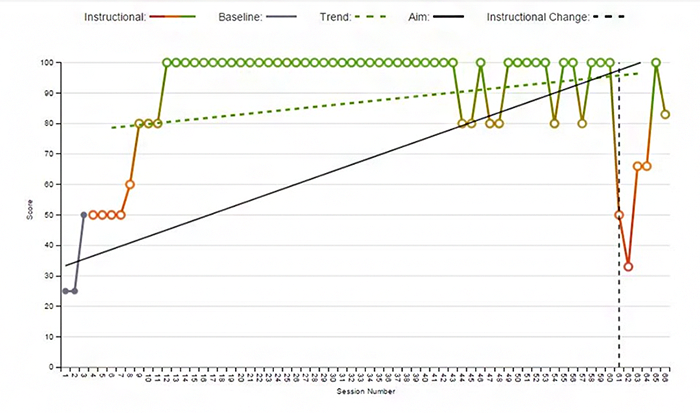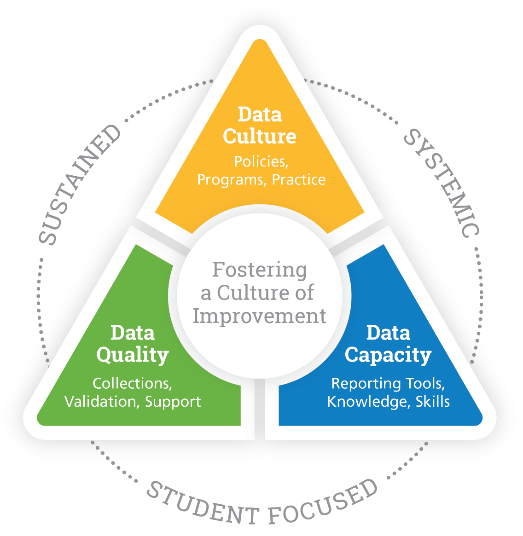New Standards in Special Education Series: Being Compliant Isn’t Enough – How to Prepare Your District for the Increasing Responsibility to Improve Student Outcomes
Author: Matthew Korobkin, Senior Advisor – PCG
For students with Individualized Education Programs (IEPs), progress monitoring has meaningfully changed in recent years – from a required, compliance-driven exercise to one that truly provides data on a child’s progress, thus informing his or her instruction. At the same time, educators continue to struggle with it. When conducted effectively, progress monitoring can be used as a critical tool to drive instruction. But when conducted poorly, or nonexistent, a lack of progress monitoring can hinder a student’s academic and functional growth and have avoidable, distracting, and costly legal ramifications.
What is Progress Monitoring?
Progress monitoring is a scientifically-based practice used to assess a child's academic progress on IEP goals and evaluate the effectiveness of instruction. Progress monitoring tells the teacher, child, and family what a student has learned and what still needs to be taught. Individuals with Disabilities Education Act (IDEA) 2004 states that an IEP must contain a description of how the child's progress toward meeting the annual goals will be measured, and that periodic reports be provided. Progress monitoring is a separate activity from the progress reports that may be issued for all students in a school on a quarterly basis; they are specific to students with IEPs. A progress report for all students typically includes mid-quarter updates on attendance, course progress, and teacher comments. Progress monitoring, however, includes qualitative and quantitative data on student progress that is directly linked to a student’s IEP goals.
As described by Will Gordillo and Anne Miller in a PCG white paper titled Progress Monitoring With Data Collection of IEP Goals, it is widely known that school districts continue to use a variety of strategies to monitor, track, and report progress on IEP goals. Some schools and districts have clearly delineated procedures to guide these interrelated processes and others do not. All the while, teachers continue to struggle with a lack of guidance, support, tools, and resources readily available to incorporate progress monitoring and to simplify the data collection necessary to measure and report progress on their students’ annual IEP goals.
What Does Effective Progress Monitoring Look Like?
As we’ve shared in an earlier blog post in this series, progress for a student with a disability must be appropriate in light of their circumstances. Furthermore, yearly progress must be demanding. Students’ goals may differ, but every student should have the chance to meet challenging objectives. And when an IEP goal and its subsequent objectives are SMART – Specific; Measurable; Attainable; Relevant; and Time-bound – a roadmap has been created to monitor progress.
When progress monitoring is happening successfully, it can serve as a critical tool to inform instruction. For example, the graph below shows the progress monitoring data for a student with an IEP. Using a progress monitoring tool that was tied to an IEP case management solution, the student’s erratic responses are graphically represented in the system. Using these data, the child’s teacher can make instructional changes that subsequently lead to student improvement.

How Can Progress Monitoring Be Driven Through a Culture of Improvement?
When schools and districts do not have consistent progress monitoring systems in place, the task of progress monitoring can seem daunting to educators. Addressing the challenges of progress monitoring starts at the top—with executive leaders who foster and give license to a district-wide culture of improvement. From there, teachers, child study team members, and administrators must be the champions of this mindset. Fostering this culture of improvement around progress monitoring for students with disabilities requires three key ingredients:

- A data culture that promotes a consistent program, school, and districtwide definition and consistent reporting practices around progress monitoring for students with IEPs.
- Data capacity, ensuring that teachers have the right tools to immediately connect a student’s IEP goals and objectives to a progress monitoring report that graphically represents a student’s progress.
- Data quality, ensuring that student data is collected in a timely and consistent manner across a student’s special education programming.
Why Does Progress Monitoring Matter?
Student outcomes improve when their progress is monitored and instruction is changed to meet their needs. Through changes in federal policy and a recent, pivotal decision made by the U.S. Supreme Court, the focus of progress monitoring has shifted from compliance to outcomes – with the monitoring as a means to document the student’s progress.
Below are a few helpful tips for using progress monitoring to maximize student success:
- Ensure there are districtwide standard operating procedures for special education that document the process by which progress is monitored. Make sure that staff are not confusing schoolwide progress reports for all students with progress monitoring, specific to students with IEPs.
- Leverage tools that allow for instant data entry of progress monitoring data. Ease and convenience are a key factor in ensuring the timely entry of student data; utilizing an IEP case management system that includes a convenient progress monitoring tool can be especially important to ensuring there are accessible, informative, and timely reports that can immediately drive instruction.
- Engage in fostering a culture of improvement, starting at the central office, that supports data culture, data capacity, and data quality. Ensure that teachers, child study team members, and administrators serve as the ambassadors of this culture, having it inform the process that drives progress monitoring.
- Ensure that your progress monitoring is legally defensible in due process hearings. School districts often lose valuable time and money in court because their present monitoring tools merely collect anecdotal data. Progress reports should include both qualitative and quantitative data. Through IEP goals that are ambitious and challenging, progress monitoring data should support that a student is making progress that is appropriate in light of their circumstances.
About the Author
Matthew Korobkin is a New Jersey-based special education subject matter expert with Public Consulting Group. A former teacher and state education official at the Delaware Department of Education, he now works with school districts on special education strategic planning, training, and special education program reviews.
About Public Consulting Group
Public Consulting Group, Inc. (PCG) is a leading public sector management consulting and operations improvement firm that partners with health, education, and human services agencies to improve lives. Founded in 1986 and headquartered in Boston, Massachusetts, PCG has over 2,000 professionals in more than 50 offices around the US, in Canada and in Europe. PCG’s Education practice offers consulting services and technology solutions that help schools, school districts, and state education agencies/ministries of education to promote student success, improve programs and processes, and optimize financial resources. To learn more, visit www.publicconsultinggroup.com/education.
For more information on how EDPlan can help you create ambitious, standards-based, and SMART IEP goals, contact us today at 1-800-210-6113 or info@publicconsultinggroup.com.
Tags :
IEP,
Special Education,
progress monitoring,
student success,
goals,
case management system,
system,
training,
compliant,
student outcomes,
growth,
culture of improvement,
data culture,
data capacity,
data quality